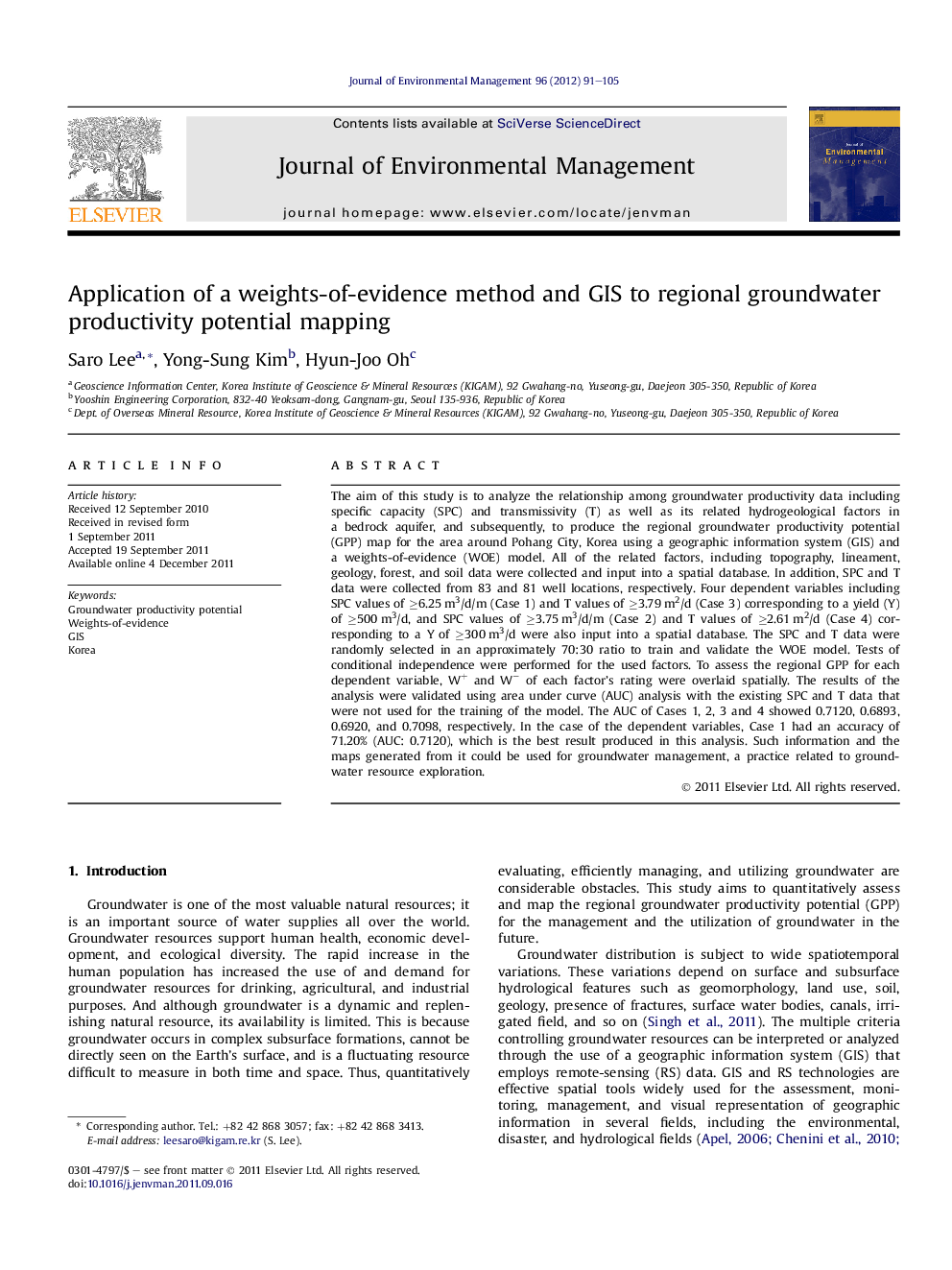| کد مقاله | کد نشریه | سال انتشار | مقاله انگلیسی | نسخه تمام متن |
|---|---|---|---|---|
| 1056892 | 947051 | 2012 | 15 صفحه PDF | دانلود رایگان |

The aim of this study is to analyze the relationship among groundwater productivity data including specific capacity (SPC) and transmissivity (T) as well as its related hydrogeological factors in a bedrock aquifer, and subsequently, to produce the regional groundwater productivity potential (GPP) map for the area around Pohang City, Korea using a geographic information system (GIS) and a weights-of-evidence (WOE) model. All of the related factors, including topography, lineament, geology, forest, and soil data were collected and input into a spatial database. In addition, SPC and T data were collected from 83 and 81 well locations, respectively. Four dependent variables including SPC values of ≥6.25 m3/d/m (Case 1) and T values of ≥3.79 m2/d (Case 3) corresponding to a yield (Y) of ≥500 m3/d, and SPC values of ≥3.75 m3/d/m (Case 2) and T values of ≥2.61 m2/d (Case 4) corresponding to a Y of ≥300 m3/d were also input into a spatial database. The SPC and T data were randomly selected in an approximately 70:30 ratio to train and validate the WOE model. Tests of conditional independence were performed for the used factors. To assess the regional GPP for each dependent variable, W+ and W− of each factor’s rating were overlaid spatially. The results of the analysis were validated using area under curve (AUC) analysis with the existing SPC and T data that were not used for the training of the model. The AUC of Cases 1, 2, 3 and 4 showed 0.7120, 0.6893, 0.6920, and 0.7098, respectively. In the case of the dependent variables, Case 1 had an accuracy of 71.20% (AUC: 0.7120), which is the best result produced in this analysis. Such information and the maps generated from it could be used for groundwater management, a practice related to groundwater resource exploration.
► We analyze the relationship among groundwater productivity data and its related factors.
► The productivity data include specific capacity (SPC) and transmissivity (T) in the study.
► The productivity potential map is produced using a GIS and weights-of-evidence model.
► The relationship and maps could be used for groundwater management.
Journal: Journal of Environmental Management - Volume 96, Issue 1, 15 April 2012, Pages 91–105